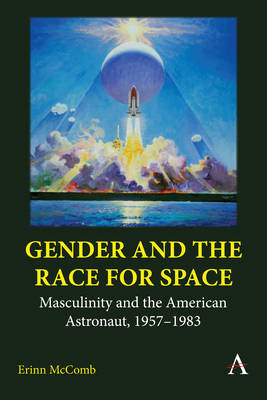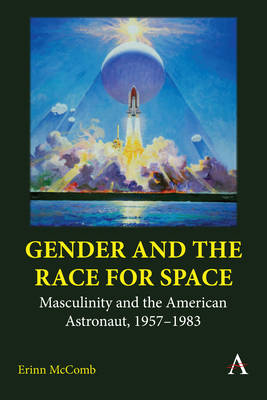
- Afhalen na 1 uur in een winkel met voorraad
- Gratis thuislevering in België vanaf € 30
- Ruim aanbod met 7 miljoen producten
- Afhalen na 1 uur in een winkel met voorraad
- Gratis thuislevering in België vanaf € 30
- Ruim aanbod met 7 miljoen producten
Omschrijving
This book chronicles the history of early spaceflight and asks how American gender culture shaped the public image of the American astronaut and spaceflight technology during some of the tensest years of the Cold War era. While historians have pieced together the story of American women's fight for spaceflight, this work adds to the narrative by analyzing masculinity and the astronaut image by focusing on how that image came to terms with a perceived Cold War masculinity crisis. The astronaut image was informed by Cold War ideals of fixed gender binaries, specifically, the masculine ideal of control over technology. The American astronaut performed masculinity in space through his control of the space capsule. This emphasis on astronaut control helped mold a distinctly American (anti-communist) masculinity that appeared--on the surface anyway--to resolve not only an American masculinity crisis but helped win the Cold War on an ideological and popular level.
The book begins by establishing a post-World War II masculinity crisis dialogue. For instance, Americans saw communism, conformity, feminism, homosexuality, automation, minority rights, and the dreaded "organization man" as threats to masculinity. Drawing upon this scholarship, this book explores how this dialogue played out within the spaceflight public discourse from 1957 through 1983--a time when cosmic conquest was integral to America's success in maintaining domestic security and morale while securing victory in the international conflict with the Soviets. Using primary sources from the public record, such as newspapers, magazines, media, the National Aeronautics and Space Administration (NASA), Congress, speeches, the astronaut's stories, and intellectual works, the book states that the American public discourse constructed the astronaut as an archetype of American masculinity through the spaceman's ability to control spaceflight technology. The assumption that the astronaut could "fly" the capsule insinuated an American masculinity of individualism apart from Soviet conformity. The American accentuation of pilot control continued from Project Mercury through Project Apollo, but it often clashed with computer control, space accidents, the scientist-astronaut, and mission control. These conflicts led the astronaut image to be refashioned into that of Michael Kimmel's "democratic manhood"--a masculinity that encompassed the self-made man and the team player. Democratic manhood still centered on masculine control, either men as individuals or men working in teams. The moon landing symbolized that through astronaut control of technology, Americans had conquered space. Women and people of color were left out of this dialogue of technological control but played important roles as passive actors with technology. Control meant a white masculine performance with spaceflight technology. Running parallel to this need to create a fixed masculinity, women fought for their chance for spaceflight, while African Americans and Hispanics were largely feminized as non-technological users. With the 1969 moon conquest, the domestication of spaceflight quickly followed with the space shuttle taxis that--for a short period anyway--demonstrated the safety of spaceflight. The book concludes that within this domesticated spaceflight framework, diverse women at NASA--both astronauts and staff--challenged fixed gender roles by proving themselves courageous, individual professionals in what by 1986 became the dangerous business of spaceflight.
Specificaties
Betrokkenen
- Auteur(s):
- Uitgeverij:
Inhoud
- Aantal bladzijden:
- 304
- Taal:
- Engels
- Reeks:
Eigenschappen
- Productcode (EAN):
- 9781839987175
- Verschijningsdatum:
- 10/06/2025
- Uitvoering:
- Hardcover
- Formaat:
- Genaaid
- Afmetingen:
- 152 mm x 229 mm
- Gewicht:
- 576 g

Alleen bij Standaard Boekhandel
Beoordelingen
We publiceren alleen reviews die voldoen aan de voorwaarden voor reviews. Bekijk onze voorwaarden voor reviews.








